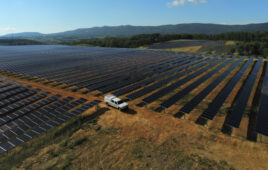At Intersolar’s policy session “Net Metering in Flux: Where States Are Heading on NEM Changes,” speakers emphasized how fragmented solar policy is across the United States.
There is no established value of solar nationwide, and there likely won’t be in the near future.
Although utilities are working to push fixed demand charges on solar customers, they are generally not succeeding. Beyond fixed charge increases, utilities are implementing many different rate design changes, said Kevin Fox, CEO of EQ Research. Maryland and Minnesota soon will try time-of-use rates, and Massachusetts has its first IOU with a mandatory demand charge on solar customers.
The shift away from net metering has proven damaging to local solar markets if it’s abrupt and not well-planned.
In Hawaii, when net metering was ended almost overnight, local Hawaiian installers were the ones who lost out, said Will Giese, executive director of the Hawaii Solar Energy Association. National installers had the capital to withstand the downturn, but many of the smaller mom and pop solar shops that provided jobs to Hawaiian residents had to close their doors. Giese thinks performance-based rate making will be the best choice moving forward for DER regulation in Hawaii.

Giese’s lessons learned after net metering was abruptly ended in Hawaii. In the graph at right, he illustrates how local contractors have taken a hit since net metering ended.
Although some states are wreaking havoc on the solar market with policies that don’t fairly value solar, other states are working on innovative ways to value solar even as net metering is phased out. New York uses a value of solar model called “VDER” or Value of Distributed Energy Resources. This program takes different value components and assesses the value of each solar project based on those criteria.
Though the New York model is one of the best examples of the future of correctly valuing solar after NEM is phased out, Ilan Gutherz, senior director of policy and strategy at Borrego Solar, wants other regulators to learn from its mistakes. He advises others to make sure to go through all the painstaking details of valuation at the beginning of the process, not implement the policy and then try to justify values later.









Mississippi’s top 1/3rd is at avoided cost export, and bottom 2/3rds is at “4 cents instead of 2.5, but with an additional $10/month solar discriminatory fee”. EQ does it’s graphic a disservice to associate MS with California. The southeast monopolies ought to be ashamed of themselves for providing less consumer protection than their deregulated peers.